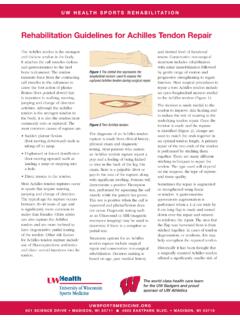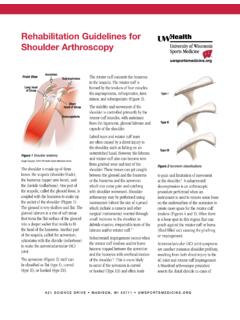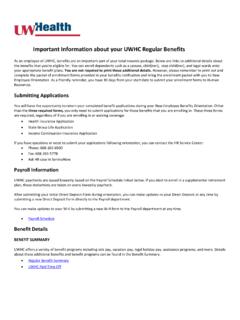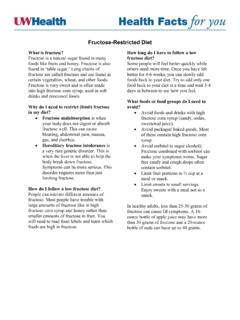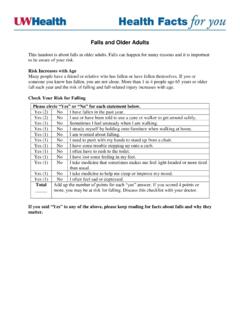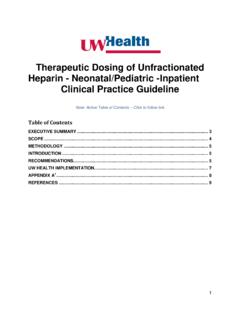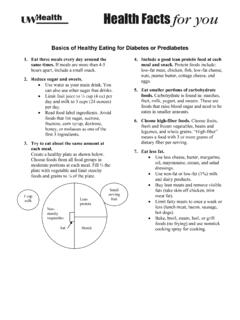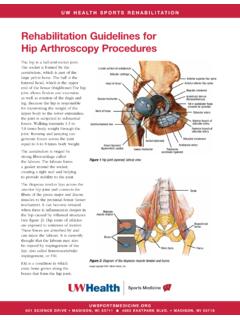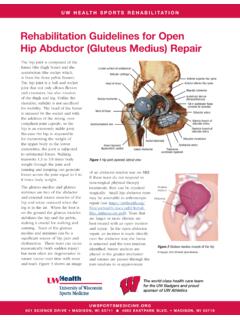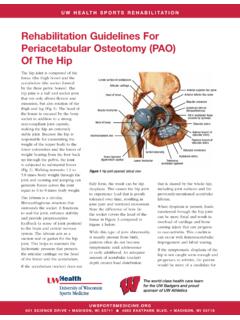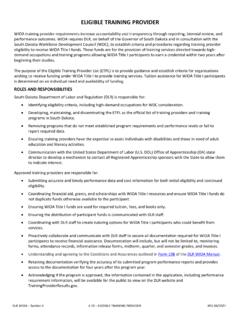Transcription of Additional Contributions - UW Health
1 AdditionalContributionsET-2123 (REV 12/11/2015)Scan to read of Contents PageIntroduction ..1 Employee After-Tax Additional Contributions ..2 Tax-Deferred Additional Contributions Under Section 403(b) of the Internal Revenue Code (IRC) ..2 Determining Annual Contribution Limits ..3 Investment of Your Additional Contributions ..3 Buying Creditable Service ..4 Benefit Payment options ..4 When to Apply.
2 5 Required Minimum Distributions ..5 Death Benefits ..5 Rollovers to Another Plan ..6 Table I - Annuities Certain ..7 Table II - Life Annuities ..7 ETF has made every effort to ensure that this brochure is current and accurate. However, changes in the law or processes since the last revision to this brochure may mean that some de-tails are not current. The most current version of this document can be found at Please contact ETF if you have any questions about a particular topic in this does not discriminate on the basis of disability in the provision of programs, services or employment.
3 If you are speech, hearing or visually impaired and need assistance, call toll free 1-877-533-5020 or 608-266-3285 (local Madison). We will try to find another way to get the information to you in a usable form. 1 Who Should Read this Brochure? Members of the Wisconsin Retirement System who: would like to make Additional Contributions to their account to supplement their retirement benefit; or are considering buying creditable service to increase their retirement benefits. IntroductionIf you are a Wisconsin Retirement System participant who is currently employed with a WRS employer, you can make voluntary Additional Contributions to your WRS account.
4 All active WRS employees may make voluntary after-tax Contributions to the WRS. Your eligibility to make these Contributions , and the amount that you may contribute each year, is subject to federal tax laws. If you have made voluntary Additional Contributions you can use this money to buy any creditable service that you are eligible to purchase. Additional Contributions begin to earn interest on the January 1 after the Department of Employee Trust Funds receives them. Payments received in 2016 will not earn interest for calendar year 2016.
5 They will begin earning interest on January 1, 2017. You may want to consider this fact when you are deciding what time of year to submit Additional Contributions to your account. Additional Contributions received as payroll deductions are credited for the year the earnings were paid ( , those deducted from earnings paid in December 2015, but received from employers in January 2016 are credited as 2015 Contributions ).This booklet describes the type of Additional Contributions that you can make, the benefits of making these Contributions and the restrictions that apply.
6 2 Employee After -Tax Additional ContributionsEmployee Additional Contributions are made to a WRS account from after-tax earnings. As a WRS member, you may make after-tax Additional Contributions to your account in any calendar year that you receive earnings from a WRS-participating employer. This applies even if your current employment is not covered under the WRS and your earnings are not reported to the WRS. For example, if after you retire, you start work with a WRS employer that is not WRS-covered employment, you could make Additional Contributions .
7 The amount that you can contribute in any year is subject to the limitations under federal tax laws. (See the Determining Annual Contribution Limits section.)There are two ways that you can make employee Additional Contributions to your WRS account. 1. The first is through payroll deduction. This requires an agreement between you and your employer to deduct a specified amount from your after-tax earnings. Your employer will then submit the Contributions monthly to ETF. Employers are not required to allow employees to make Additional Contributions through payroll The second method is for you to submit an Additional contribution directly to ETF as a lump sum payment.
8 ETF must receive this payment by the last state office business day of the year to earn interest for the following you make these Additional Contributions from after-tax earnings, the interest credited to your WRS account accumulates on a tax-deferred basis. You will pay state and federal income tax on the investment earnings that are credited to your account when you or your beneficiary receive these amounts as a distribution from your WRS Additional Contributions Under Section 403(b) of the Internal Revenue Code (IRC)Prior to January 1, 2009, ETF accepted WRS Additional Contributions from pre-tax earnings from employees of certain school districts and other educational institution employers.
9 The Contributions received from employers as payroll deductions and the employees WRS tax-deferred Additional Contributions are regulated by IRC Section 403(b). As of January 1, 2009, ETF stopped accepting 403(b) Additional Contributions due to new federal plan requirements. Therefore, 403(b) Contributions from earnings paid in 2008 were the last 403(b) Contributions accepted by ETF for WRS you have a WRS 403(b) Additional Contributions account, the funds will continue to earn interest until you are eligible to withdraw the deposits. Withdrawals are subject to IRC rules ( , you must terminate from all WRS-covered employment).
10 Your tax-deferred Additional Contributions and the interest credited to your account are subject to state and federal income tax when they are distributed to you or your an alternative supplemental tax-deferred retirement savings program, you may want to consider the Wisconsin Deferred Compensation (WDC) Program. The WDC is authorized under IRC Section 457. The WDC is available to all active state and university employees. Active local government and school district employees are also eligible if their employer has elected to offer this optional benefit program.
